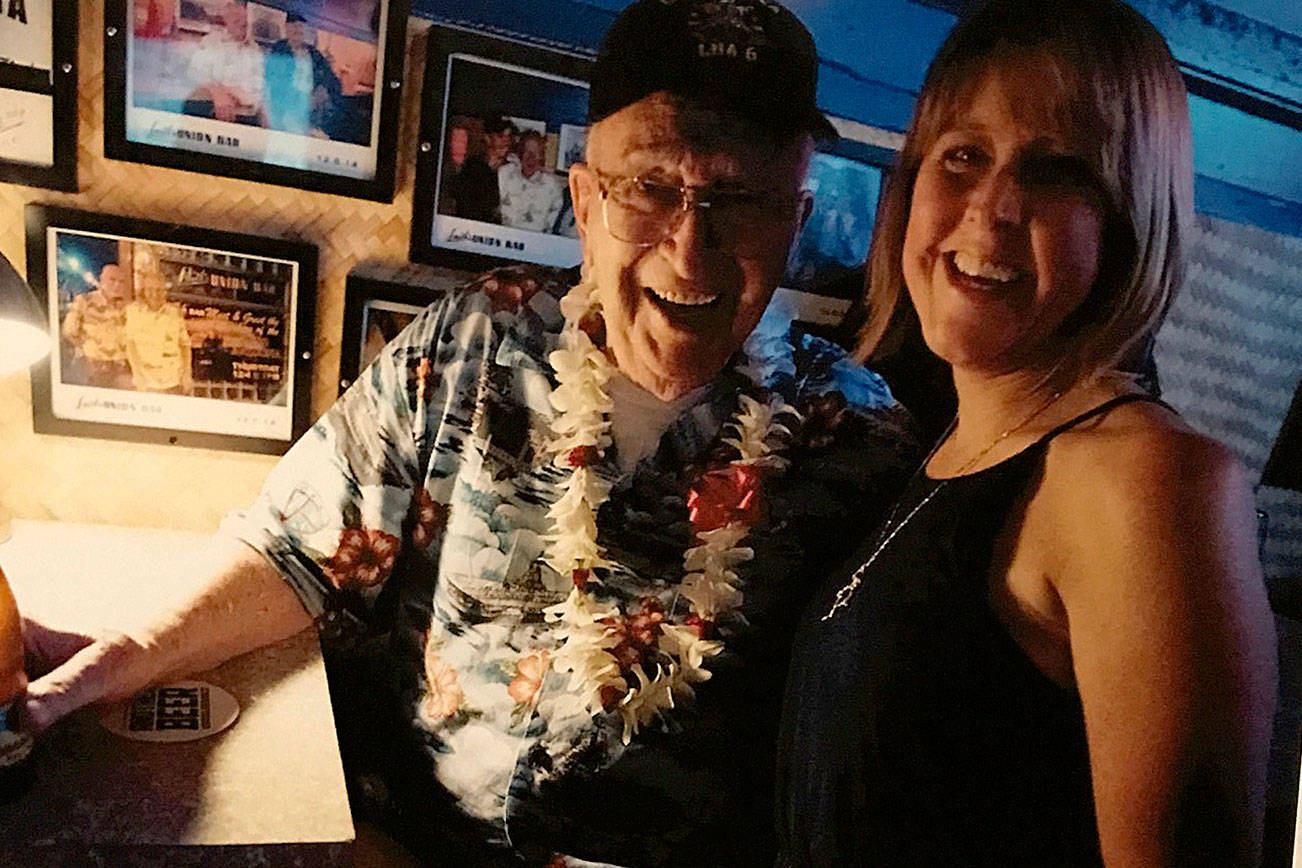By Charles H. Fattig
McCleary Historical Society
Lauren F. Bruner died September 10, a couple of months short of his 99th birthday.
On Dec. 7, his ashes were interred at the USS Arizona Memorial site in Pearl Harbor, Hawaii, per his request to be with his shipmates when his time came.
Bruner was a McCleary resident when he graduated from Elma High School in 1938. He was active in sports. He had been on the McCleary Athletic Club’s boxing team in 1938. He fought in the 160-pound class.
Soon after graduation, at age 18, he enlisted into the U.S. Navy and was assigned to the Arizona in 1939.
On Dec. 7, 1941, Bruner was in the crow’s nest, 70 feet above the waterline, when the Japanese sent hundreds of aircraft — bombers, fighters and torpedo planes — in a preemptive strike against eight U.S. Navy ships berthed on Battleship Row.
Bruner was wounded in the leg by the enemy strafing machinegun fire. He also received burns over nearly 70% of his body. It was a miracle he lived to age 98.
Of the Arizona crew, 1,177 people, including Admiral Isaac Kidd, perished with the ship.
Only 334 on board the Arizona survived.
Bruner visited Elma and McCleary for the last time in November 2013. He was given a hero’s welcome and rode in Elma’s Veteran’s Day parade. He visited his boyhood home in McCleary, at the end of Simpson Avenue. It was a big homecoming for him. The Montesano Vidette wrote a wonderful tribute to him on that momentous occasion. We veterans appreciated that.
Now that Bruner has passed away, there are only three survivors from the Arizona still living.
In the February 12, 1942 Vidette, there appeared this following article:
“Still suffering from severe burns sustained when Japanese bombers attacked and sunk the U.S.S. Arizona at Pearl Harbor on December 7, Lauren F. Bruner, nephew of Mrs. George Lincoln, was in Montesano this week, the first man to return here from the actual scene of the outbreak of war on the Pacific.
“Bruner, who has been in the navy nearly three years, is rated as a fire control man, first class. In the line of duty, he was in the crow’s next atop one of the battleship’s masts when the Japanese planes swooped down for their surprise attack.
“What happened then remains confused in Bruner’s mind. Too much happened too fast. Bombs were dropping and exploding on all sides. Just where he was when a bomb was dropped down the warship’s funnel, exploding in its interior, he can’t say.
“Scorching flames seared his arms, legs and face. His hair was burned off. A machine gun bullet got him in one leg, a wound from which he still limps. After he was in the hospital at Honolulu, he recalled having heard one native Hawaiian call to another to get some more help. ‘He’s too big for us,’ he said, apparently finding Bruner, who is a good 6 feet tall, too heavy a burden. But those were details that are all but lost.
“Bruner doesn’t talk much about his escape. ‘It was quite an experience,’ is about as far as he’ll go. ‘But I’ll be glad to get back at a’em.’ ”
News from McCleary in February 1943 states, “the Navy Mothers’ Club of McCleary, in selecting a name, honored Lauren Fay Bruner, FC 1/c, son of Mrs. J.W. Kellerman and it will be known as the Lauren Bruner chapter.
“Bruner was the only McCleary boy wounded in action, having been both shot and burned when the (Japanese) attacked Pearl Harbor.
“At last week’s meeting, Mayor Lee Wills (McCleary’s first mayor) presented the club with a handsome gavel.”
Further news of that same period reports that Bruner was spending a too brief visit after being released from a Navy hospital in California, where he was treated for third degree burns and a bullet wound. “Reports are he left a pinochle game to go to his post of duty in the crow’s nest. That likely saved his life.
“Although busy getting the range on attacking aircraft, he had the pleasure of seeing three enemy planes blown to bits. As the Arizona caught fire, flames swept upwards and engulfed the crow’s next, seriously burning the six men there. A rope was thrown to them from another vessel and they escaped hand over hand. Two of the six men died from their injuries.”
We must remember.
Charles H. Fattig is the curator for the McCleary Historical Society. The society can be reached at facebook.com/McClearyMuseum.



